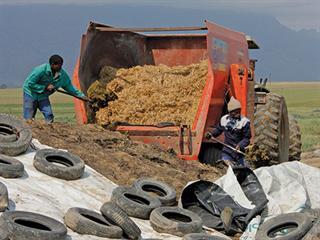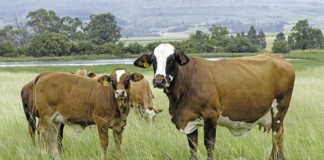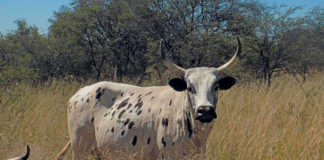
Pasture-based dairy farming is widely practiced along this country’s eastern seaboard. With pasture grass being a dairy operation’s cheapest source of protein and energy, good pasture management is a key profit driver. Properly ensiled grass helps the pasture-based dairy farmer stretch his more expensive maize silage and milled concentrate rations.
“A pasture-based dairy cow’s typical daily ration consists of 50% to 60% roughage, while the rest is compound feed,” explains Wim Hofman, cattle specialist for De Heus Animal Nutrition.
Read: Managing a ley pasture for best returns
“The intake of higher quality silage leads to increased consumption by a cow that, in turn, leads to improved health and fertility, increased milk production and profit for the dairy business,” he says.
High quality grass yields good quality silage. Grass cut and ensiled too late will have unpalatable, woody stems, while incorrectly ensiled grass could become mouldy and inedible .This leads to lowered intakes, with cows eating less dry matter (DM) and suffering exposure to potentially harmful bacteria and fungi. In addition, energy that could have been used for milk production will now be inefficiently used to digest poor quality grass silage. The dairy farmer will then have to maintain production with more costly maize silage and concentrates.
“By contrast, appropriate age pasture grass cut to the correct lengths and properly ensiled will lead to higher milk production without the need for increased roughage and concentrates,” says Wim.
When looking at the effect of dairy nutrition quality on milk production, De Heus uses the world standard – a dairy cow needs 460 units of energy (VEM) to produce 1kg of milk.
Read: Banking feed in the silage pit
A 2013 De Heus study of maize silage quality in South Africa found that the bottom 10% of samples yielded an average of 780 VEM/kg, while the top 10% yielded an average of 970 VEM/kg – a significant difference.
The bottom 10% of maize silage samples in the study averaged 120g/kg DM, in comparison with the average 340g/kg in the top 10%. “So a cow eating the same quantity of good quality silage as a that of a cow eating poor quality silage will get more energy that can be used for milk production,” notes Wim.
De Heus also found that better quality roughage leads to increased intakes. Cows eating the top 10% of sampled roughage typically consumed 12kg DM/day of the roughage, containing 11 640 VEM, with 3kg/day concentrates, to milk an average 19,5l/cow/day.
Contact Wim Hofman (Netherlands) at [email protected] or Richard Baxter (SA) on 083 809 1384 or at [email protected].













